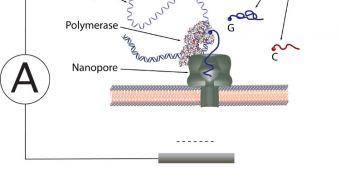A collaboration of researchers from the US National Institute of Standards and Technology (NIST) and the School of Engineering and Applied Science at Columbia University announce the development of a new method for sequencing DNA, which is fast, accurate and inexpensive to apply.
It is unclear at this point whether it will be marketed effectively or not. If that is indeed the case, then doctors could soon gain access to a method of investigation that will bring the goal of personalized medicine closer to reality.
According to the team, the technique can be likened to a molecular ticker-tape reader. It can produce full genetic sequences in relatively short amounts of time, and is able to identify specific biomarkers.
The latter are molecules or specific genetic sequences that indicate the existence of a certain medical condition. The majority of illnesses express such biomarkers, and investigators around the world are currently working on identifying which of these molecules or sequences is associated to which disease.
Currently, genetic sequencing scans cost thousands of dollars, and are based on very complex processes that take a lot of time to complete. Therefore, having access to a faster and cheaper method could enable more people to undergo such studies.
Constructing a larger database of human genomes could contribute to a variety of other studies, such as tracing back human evolution and ancestry, figuring out the root causes of certain genetic vulnerabilities and diseases, and so on.
The investigation was led by NIST scientist John Kasianowicz. The researchers he coordinated worked closely together with colleagues at the Center for Genome Technology and Biomolecular Engineering. The Columbia University group was led by the Center's director, Jingyue Ju.
Kasianowicz says that the main component used in the new sequencing approach – an instrument called an operational amplifier – costs less than $1,000, and must only be purchased once. This means that most hospitals around the world will be able to afford a new genetic sequencer.
“The cost of materials and software should be trivial,” the investigator goes on to explain
Details of how the method works were published in a paper entitled “PEG-labeled nucleotides and nanopore detection for single molecule DNA sequencing by synthesis,” which appears in the September 21 issue of the esteemed journal Scientific Reports.

 14 DAY TRIAL //
14 DAY TRIAL //